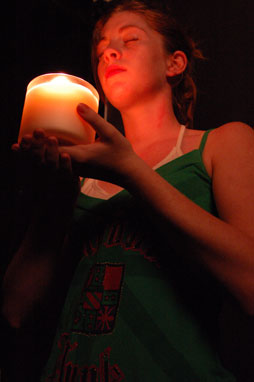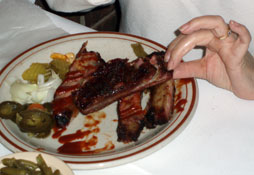By Tosha Scarbro/reporter

Often considered a new age trend, aromatherapy is an ancient art that has been around for six thousand years.
Aromatherapy uses an essential oil to produce a physiological effect on a person or an atmosphere.
The term comes from aroma, which means scent, and therapy, which means treatment.
“ Essential oils will have an effect on a person’s body if they breathe them or massage them on to the skin,” Karen Parker, massage-aroma therapist and founder of the massage program at Texas Christian University’s fitness center, said.
Professional practitioners use about 300 essential oils for their psychological and physiological properties. Most essential oils have antibacterial, antitoxic, anti-inflammatory, pain relieving, antidepressant and antiseptic properties.
“ An essential oil is the essential plant essence that is distilled away from the plant,” Parker said. “Essential oils are extracted from plants, flowers, trees, leaves, grasses and bark. Essential oils can be distilled, filtered or cold pressed; that’s usually better.”
Essential oil that is 100 percent pure is expensive, but it will give a person the best results. A person can buy a diluted essential oil, which is more affordable, at a health food store or an online source.
Fragrance oils are not the same as essential oils. Fragrance oils will give a person the scent only. They do not have the kind of effects that an essential oil can have, but it is possible to have a tactile association with fragrance oil.
Parker said the first thing a person needs to do is read the label of a new essential oil because it will say if it is safe or poisonous. Most essential oils have to be diluted in carrier oil before a patch test. Patch testing is important because a person can have an allergic reaction.
“ A person should start out with the basic essential oils, such as lavender,” she said. “Lavender is a safe first step for anyone starting out with aromatherapy because it can be used in so many different ways.”
In the 1900s every household washed sheets in lavender because it helped people sleep. Parker said lavender is good for migraines, headaches, indigestion, sprained muscles and smoking reduction.
According to Valerie Worwood, The Complete Book of Essential Oils and Aromatherapy, aromatherapy was discovered in the 1920s. A French cosmetic chemist, Rene Maurice Gattefosse, plunged his burned arm into the nearest vat of liquid, lavender oil. He noticed his arm healed faster and did not scar. So he dedicated his life to researching the healing powers of essential oils. Parker said the term aromatherapy, came from Gattefosse.
When making blend, for other people, a person should ask about their memories. If the recipients want relaxation therapy, then they should describe one of their more relaxing times … what they were smelling, what was around them.
Scents associated with those memories could be combined with the normal relaxing oils such as lavender, sandalwood or chamomile. When a person loves the beach, a good addition is vanilla or coconut. Although the addition will not have much of a physiological effect, Parker said the scent will help take the person back to that place. Making a personalized scent of this kind can incorporate each person’s personality on a more spiritual and emotional level.
Wendy Dugas, NE Campus psychology instructor, uses aromatherapy.
“ I sometimes use mint or citrus to feel energy,” she said. “I use flower scents to relax or feel pretty. But is my reaction tied to scent molecules or associations of past experiences?”
Aromatherapy has research behind its use.
“ Scientific studies have tied repeated pairings of a scent with biofeedback giving information on changes in blood pressure or insulin levels. This would be behavior therapy, not aromatherapy,” she said.
Parker said anyone wanting to learn more about aromatherapy should read Worwood’s book.


























